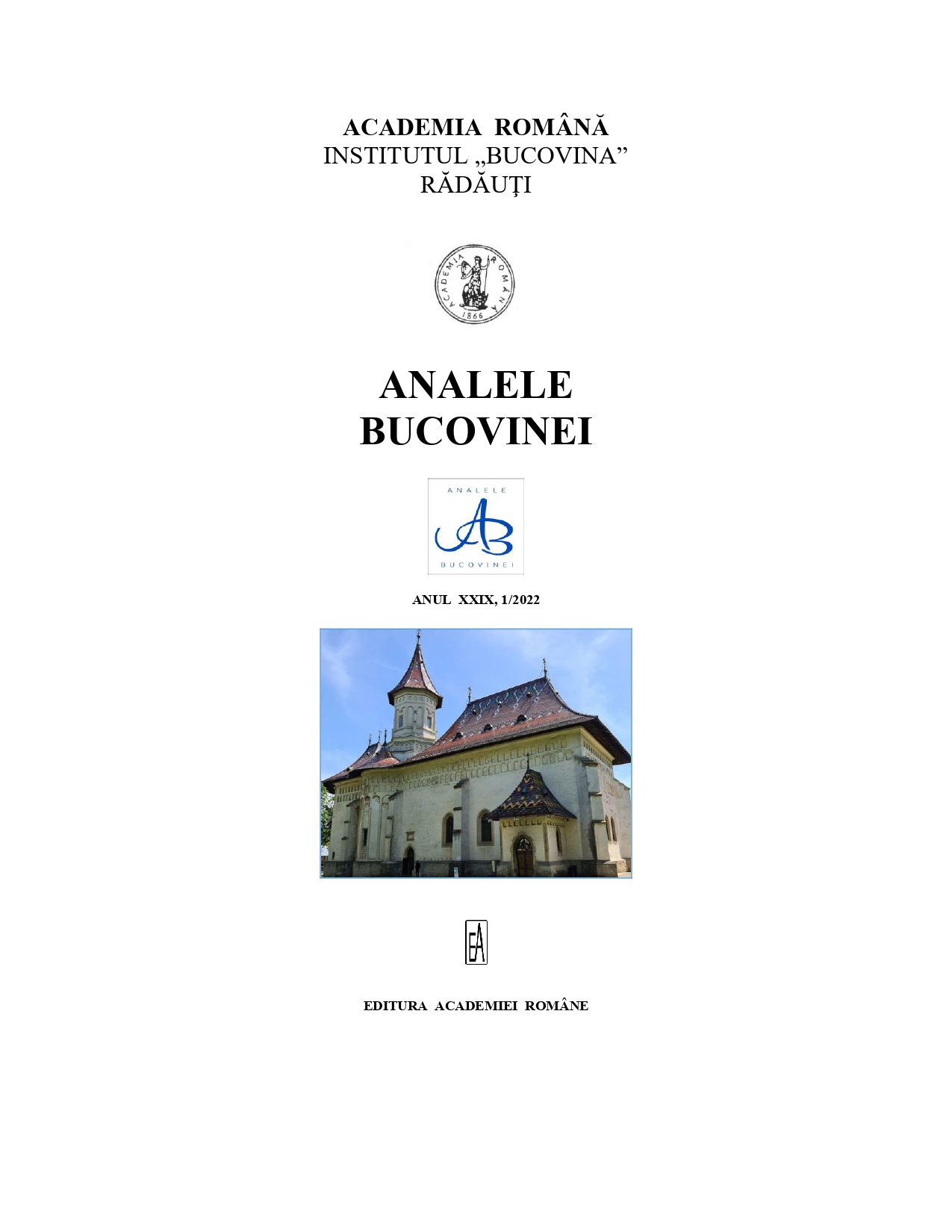STRUCTURA ETNO-LINGVISTICĂ ȘI CONFESIONALĂ A POPULAȚIEI BUCOVINEI ÎN PERIOADA INTERBELICĂ (1918–1940)
The Ethno-Linguistic and Confessional Structure of Bukovina’s Population
in the Interwar Period (1918–1940)
Author(s): Alexandrina D. CruceanuSubject(s): History, Social Sciences, Recent History (1900 till today), Theology and Religion, Interwar Period (1920 - 1939), Ethnic Minorities Studies
Published by: Editura Academiei Române
Keywords: Bukovina; ethno-demographic structure; confessional structure;
Summary/Abstract: The history of Bukovina in general and that of Bukovina during the interwar period in particular dispose of a series of historiographical works intended to highlight the various aspects of political, social, cultural, economic, ethno-linguistic, confessional issues etc. of the former Moldavian province. Some of these works are general, others specific, and many of them succeed to offer a fairly comprehensive image of the elements, processes and phenomena that have influenced the ethno-linguistic and confessional evolution of Bukovina’s population in the interwar period.The specialized articles and studies are distinguished by the great analytical and synthesis capacity of their authors, but the aspects considered by them, although extremely valuable for knowing the international factors which have influenced the evolution of national political processes, overtake only extremely tangentially the particularities of the local communities from different territorial-administrative units which could have influenced, in turn, the evolution or the tendency of certain ethno-linguistic and confessional phenomena and processes which can or could have taken an international amplitude.While many studies succeed to highlight the socio-cultural, inter-ethnic and identity realities of Bukovina during the interwar period, whose contribution to the understanding and evaluation of the international framework is extremely valuable, they do not explicitly aim to contextualize the interethnic and confessional facts and processes during the interwar period in Bukovina.The main objective of this research is to understand the impact of national and international government policies on administrative-territorial changes and, implicitly, on the ethno-linguistic and confessional structure of the Bukovinaʼs population in the interwar period. The research methodology takes into account the analysis of qualitative and quantitative data provided by statistical yearbooks, county, national and international archives, as well as Romanian and foreign historiography on the analysed issues.Therefore, this research aims to highlight the evolution of the ethno-linguistic and confessional structure of the population of Bukovina in the interwar period, as well as the internal and international factors that favoured or, on the contrary, inhibited the physiognomy of Romanian communities and national minorities in this historical space.
Journal: ANALELE BUCOVINEI
- Issue Year: 58/2022
- Issue No: 1
- Page Range: 93-116
- Page Count: 24
- Language: Romanian

